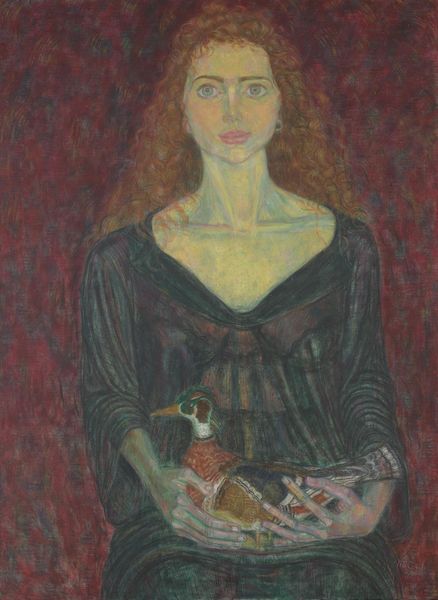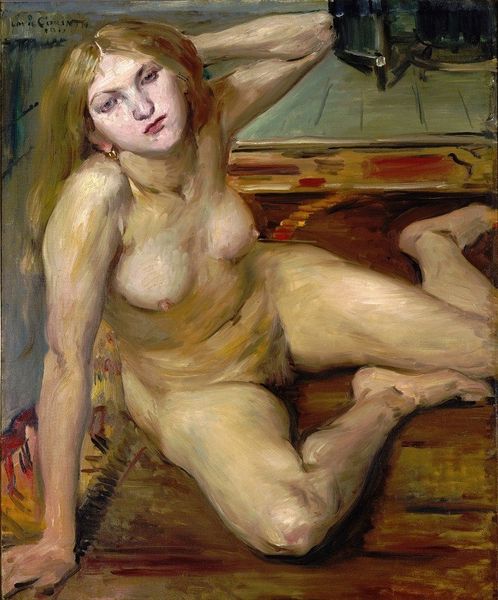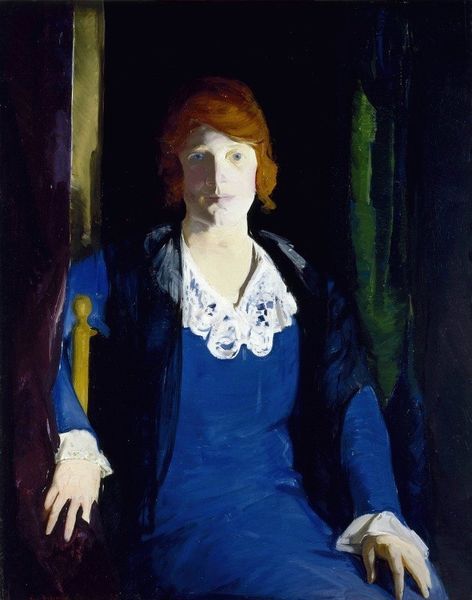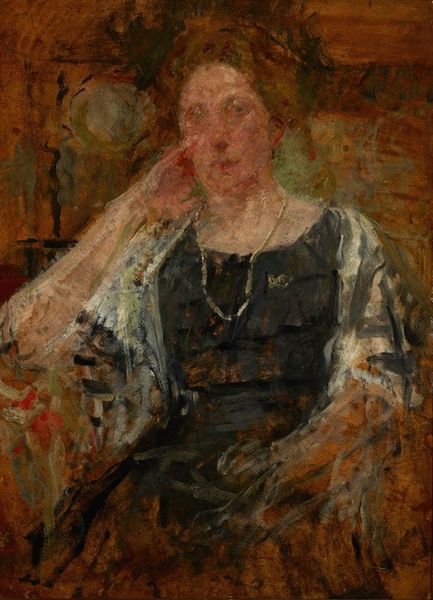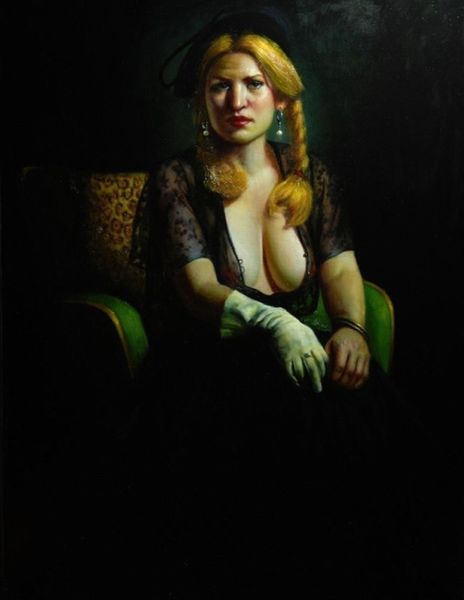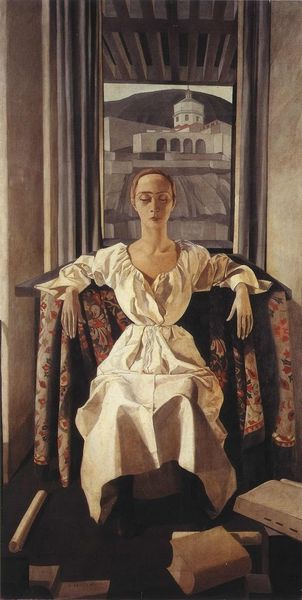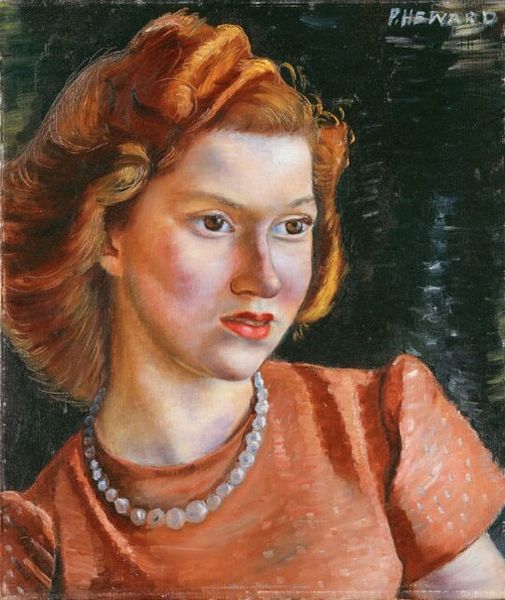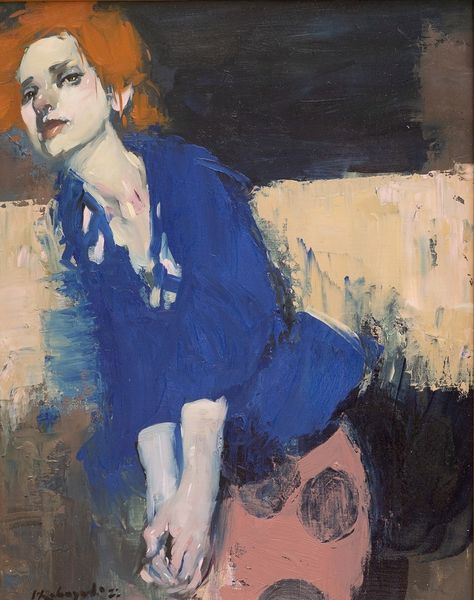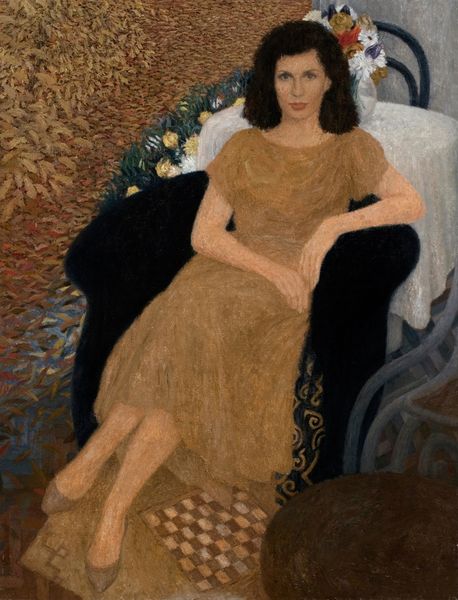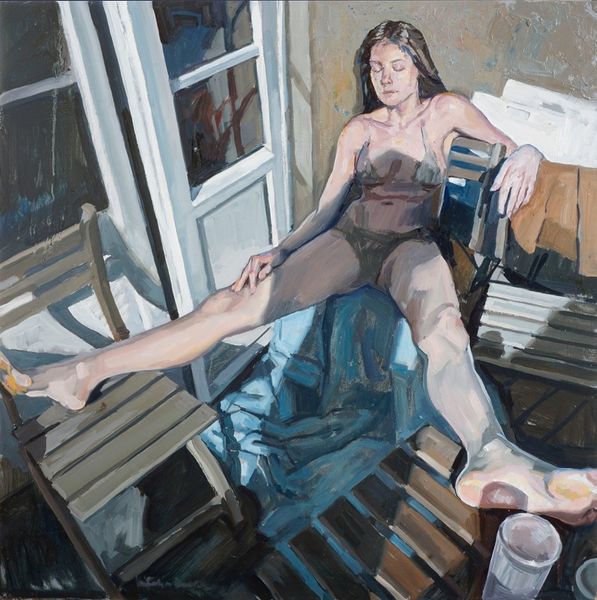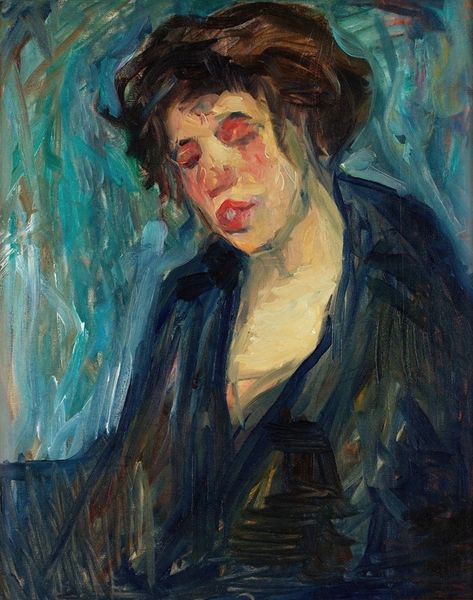
painting, oil-paint
#
portrait
#
painting
#
oil-paint
#
figuration
#
oil painting
#
cityscape
#
realism
Copyright: Abdul Mati Klarwein,Fair Use
Editor: This is Abdul Mati Klarwein’s 1961 oil painting "Drue Heinz". The muted colors give it a somber feeling, and the almost hyperrealistic portrait contrasting with the blurry background feels like a dream… or maybe a memory. What strikes you about this piece? Curator: The beauty, of course! Isn't it fascinating how the eye is drawn to her face, so crisply rendered, while the room around her melts into a delicious swirl of color? I almost feel like I know her…Do you get that too? Like she's inviting us into a secret? The city beyond, framed by the window, hints at the grand, sometimes melancholic scope of existence. It’s like looking at a photograph someone has retouched extensively. A meditation on memory, the person you were, and the inevitable fading of experiences? Editor: Yes, the dream-like quality makes it feel intimate and distant, both at once. So, how much do you think her social status plays into that impression? It feels so... bourgeois. Curator: Definitely, her necklaces are very elegant, very feminine. It is bourgeois in its comfort. This isn’t the painting of someone impoverished, but also that could be just as it may have seemed to the painter! And I can’t quite put my finger on why I love that strange tension. It's the juxtaposition of the familiar and the otherworldly! And I also admire that window. Do you feel a connection to it at all? A hidden link to the exterior world from inside such opulence? Editor: Yes, the window kind of grounds the portrait in reality. The painting plays with those inner and outer worlds, public and private identities. It is the kind of mystery that brings you back again. Curator: Exactly! And what better gift can an artist offer than the nudge to consider our inner selves reflected through the window of art? Now *that’s* bourgeois sentiment I can embrace.
Comments
No comments
Be the first to comment and join the conversation on the ultimate creative platform.
